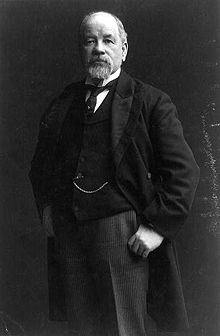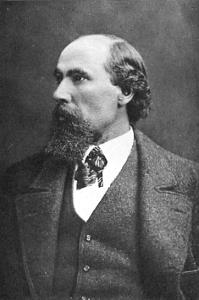Two conflicting perspectives exist for the early history of Seattle. There is the "establishment" view, which favors the centrality of the Denny Party, and Henry Yesler. A second, less didactic view, advanced particularly by historian Bill Speidel and others such as Murray Morgan, sees David Swinson "Doc" Maynard as a key figure, perhaps the key figure. In the late nineteenth century, when Seattle had become a thriving town, several members of the Denny Party still survived; they and many of their descendants were in local positions of power and influence. Maynard was about ten years older and died relatively young, so he was not around to make his own case. The Denny Party were generally conservative Methodists, teetotalers, Whigs and Republicans, while Maynard was a drinker and a Democrat. He felt that well-run prostitution could be a healthy part of a city's economy. He was also on friendly terms with the region's Native Americans, while many of the Denny Party were not. Thus Maynard was not on the best of terms with what became the Seattle Establishment, especially after the Puget Sound War. He was nearly written out of the city's history until Morgan's 1951 book Skid Road and Speidel's research in the 1960s and 1970s.

The Seattle and Walla Walla Railroad was a 3 ft narrow gauge railroad and was the first railroad in Seattle, Washington. Despite its ambitious name, actual construction never went beyond King County, the county of which Seattle itself is the seat. After being sold to Henry Villard's Oregon Improvement Company in 1880 it was renamed the Columbia and Puget Sound Railroad.
The Seattle, Lake Shore and Eastern Railway (SLS&E) was a railroad founded in Seattle, Washington, on April 28, 1885, with three tiers of purposes: Build and run the initial line to the town of Ballard, bring immediate results and returns to investors; exploit resources east in the valleys, foothills, Cascade Range, and Eastern Washington in 19th-century style, attracting more venture capital; and boost a link to a transcontinental railroad for Seattle, the ultimate prize for incorporation. The historical accomplishment of the line was Seattle to Sumas at the border, with British Columbia, Canada, connecting with the Canadian Pacific transcontinental at the border at Huntingdon, British Columbia, now part of the City of Abbotsford.

The Burke Museum of Natural History and Culture is a natural history museum in Seattle, Washington, in the United States. Established in 1899 as the Washington State Museum, it traces its origins to a high school naturalist club formed in 1879. The museum is the oldest in Washington state and boasts a collection of more than 16 million artifacts, including the world's largest collection of spread bird wings. Located on the campus of the University of Washington, the Burke Museum is the official state museum of Washington.
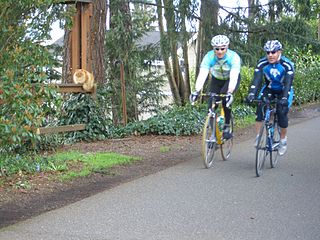
The Burke-Gilman Trail is a rail trail in King County, Washington. The 27-mile (43 km) multi-use recreational trail is part of the King County Regional Trail System and occupies an abandoned Seattle, Lake Shore and Eastern Railway corridor.

The Ballard Terminal Railroad Company LLC operates three Class III short line terminal railroads in western Washington, United States. Founded in 1997 to operate a three-mile spur through Seattle's Ballard neighborhood, the Ballard Terminal Railroad has expanded to operate two additional lines in the Puget Sound area, including Eastside Freight Railroad from Snohomish to Woodinville, Washington, and Meeker Southern Railroad, a 5 mi (8.0 km) segment from East Puyallup ("Meeker") to McMillin, Washington.
Robert Stetson Macfarlane was president of Northern Pacific Railway 1951-1966.
The Woodinville Subdivision is a railroad line that was formerly owned by BNSF Railway. It takes its name from one of its original end points in Woodinville, Washington, United States. The line extends approximately 42 miles (68 km) in east King County and Snohomish County. The line's ownership has been transferred in a deal involving King County and the Port of Seattle. The section from Snohomish to Woodinville is operated, on contract, by a company called Eastside Rail Freight, which is associated with the Ballard Terminal Railroad and Meeker Southern. However, train traffic on the subdivision is exceedingly rare, with the Seattle region's rail operations now conducted on other higher capacity routes.
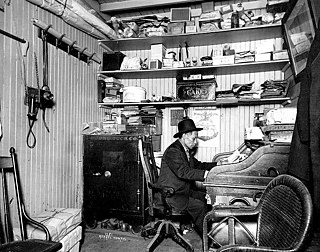
Chin Gee Hee, courtesy name Chàngtíng (暢庭), Cheun Gee Yee, was a Chinese merchant, labor contractor, and railway entrepreneur, who made his fortune in Seattle, Washington before returning to his native village in Guangdong province, where he continued his successes.
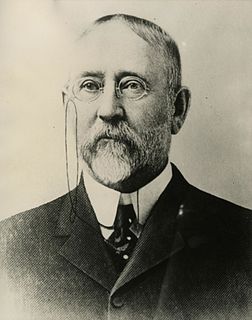
Eugene Semple was the 13th Governor of Washington Territory and the unsuccessful Democratic candidate to be the first governor of Washington State.
The Interurban Trail is a rail trail in Snohomish County, Washington. It is a hard-surfaced, non-motorized trail located on the Pacific Northwest Traction right-of-way, a route used until 1939 by the Interurban Railroad between Seattle and Bellingham. The trail in Snohomish County runs over 16 miles (26 km).

The Snohomish County Centennial Trail is a 30-mile-long (48 km) rail trail in Snohomish County, Washington, connecting the cities of Snohomish, Lake Stevens, and Arlington to Skagit County along the corridor of Washington State Route 9. The trail, administered by Snohomish County Parks and Recreation on the former right-of-way of the Seattle, Lake Shore and Eastern Railway, comprises a 10-foot-wide (3.0 m) non-motorized trail and a 6-foot-wide (1.8 m) equestrian trail. The first segment of the corridor was opened in 1989, the centennial of the statehood of Washington, and the final segment between Arlington and the Skagit County line was opened in 2013.
Nagrom was a town in King County, Washington. A logging company town, Nagrom was located in the Green River Watershed between Kanaskat, Washington and Lester, Washington. The town was built by the Morgan Lumber Company and named after Elmer G. Morgan, the company founder and owner. The site was chosen for its access to timber, and suitability to build a sawmill and mill pond. In 1910, Morgan petitioned the Northern Pacific Railway, which operated the rail line out of Puget Sound and up over Stampede Pass to build a spur into the small town. The railway balked, but Morgan persisted and eventually the railway relented. The spur into town was built in 1911. A Post office was established that same year, along with a telephone and telegraph exchange.

Jacob Furth was an Austrian Empire-born American entrepreneur and prominent Seattle banker. He played a key role in consolidating Seattle's electric power and public transportation infrastructure, and was a member of Ohaveth Sholum Congregation, Seattle's first synagogue. Bill Speidel called him "the city's leading citizen for thirty years," adding that Furth "may even have been the most important citizen Seattle ever had."

Daniel Hunt Gilman was an American attorney and railroad builder who made his career in Seattle.

The Eastside Rail Corridor is a rail Right of way where a rail trail is under development in the Eastside suburbs of Seattle, Washington. The corridor follows the path of the former Woodinville Subdivision from Renton to the City of Snohomish at Snohomish Junction. The Northern portion was still in operation in 2017 by Eastside Freight Railroad.
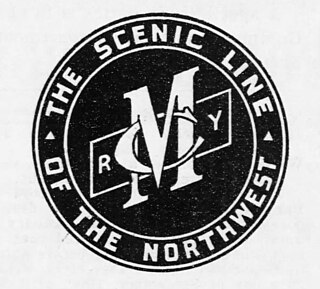
The Everett and Monte Cristo Railway was built to transport gold and silver ores from mines in the central Cascade Mountains to a smelter in Everett, Washington. After the first mining claims were staked in 1889, entrepreneurs began exploring the possibility of building a railroad to exploit the find. Construction began in April 1892 and the first train reached what became the town of Monte Cristo in August 1893. The mining boom ended in 1903. Poor ore quality and quantity played a role in the decline, but the failure of the railway to maintain service to Monte Cristo in the face of floods, landslides, winter snows, fires, and other disasters was also a factor in the collapse of the industry. Nonetheless, the railway hauled out approximately 300,000 tons of ore over the course of its operations.
